In July 2024, I wrote about a visit that my sister and I made to the Golden Lamb, a historic restaurant and inn in Lebanon, Ohio. Over it’s 200+ year existence, the Golden Lamb has hosted many well known individuals in its tavern. During my family’s annual trip to Golden Lamb, I always visit each floor to see the rooms named after these notable guests.

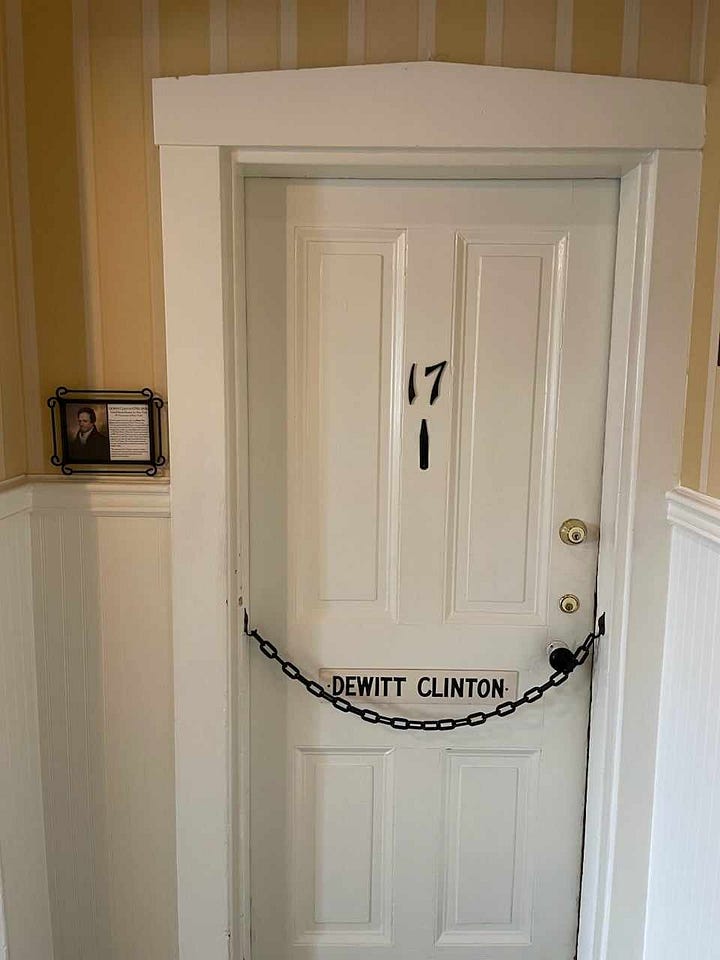
It has been clear over the years that the Golden Lamb has put effort into documenting their history, and I have enjoyed the wealth of information they are making available to history lovers such as myself on the happenings of the inn and restaurant.
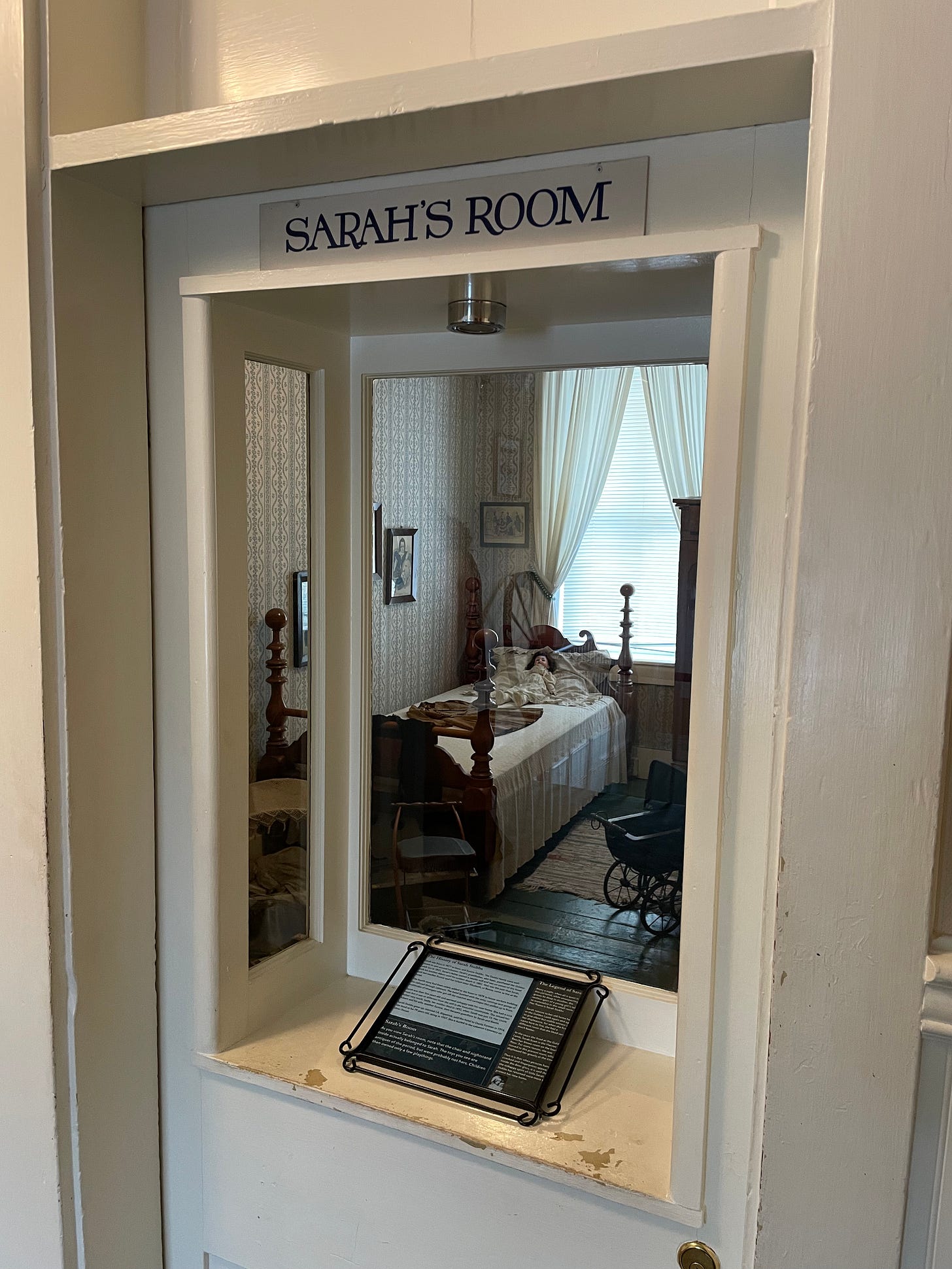
A few years back, myself and my Aunt Rose visited for a dinner that the Golden Lamb hosted to discuss its haunted history. There were a few tales of some who met their demise at the inn and various paranormal experiences that have been reported over the years. The room claimed to be most haunted is the one named after Harriet Beecher Stowe, the author of Uncle Tom’s Cabin.

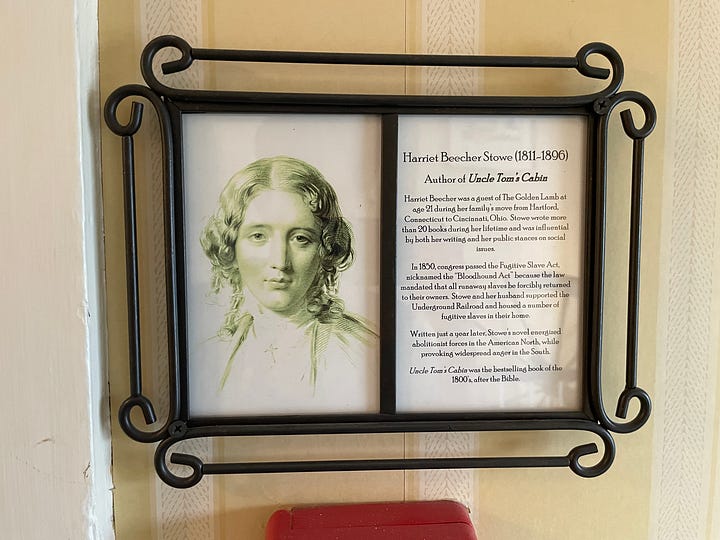
I remember during the Covid-19 epidemic I was dealing with a lot of isolation due to being a health care worker. One night I decided to stay at The Golden Lamb just to get some different scenery. I ended up in the room that was next to the Harriet Beecher Stowe room with the entire floor to myself. Due to the exhaustion I felt with work at the time, I believe that even if there were ghosts appearing that night, I might have slept through their visits!
When I visited most recently in July with my sister, we were looking for the room that used to be named after John Quincy Adams when I noticed a room named after Annie Oakley, the well known sharp shooter. I thought, “I don’t remember ever seeing a room named after Annie Oakley.”
Then, my sister proceeded to ask a couple of staff about John Quincy Adams’ room. They explained some updates that happened recently, including incorporating Adams’ room into Ulysses S. Grant’s room as well as making an effort to tell the history of more diverse people connected to The Golden Lamb, including women and African Americans. They discussed an individual who I understood to be an African American man, but at the time, I was looking around at some of the presidential rooms, and I did not grasp the full story.
A connection finds me
In last week’s post, I discussed a visit to the grave of Alphonso Taft at Spring Grove Cemetery. At the time, I was looking for graves with book symbols for a different Silent Sod post, and the Taft stone seemed to wink at me. Have you ever had a gravestone call out to you?
I pulled over to look at it, having just read recently about the son Taft as well as some tidbits about the father. By then, I had most of the pictures I wanted of book graves and was mostly focusing on finding the exit to the large cemetery, when I suddenly felt the urge to walk in a circle around the area Taft was buried. In the midst of graves dated in the 1800’s, a modern looking grave seemed again to wink for my attention.
I took a picture and later sent it to my sister, who has visited Spring Grove Cemetery often and would be interested in the story included on the headstone. To my great surprise, she explained to me that this was the same individual that we were told about at the Golden Lamb, Henry Boyd. Born on April 12, 1802 and dying on March 1, 1886, his gravestone reads:
“Born into slavery in Kentucky, Henry Boyd began earning money at the age of eighteen and bought his freedom. He learned his trade as a carpenter and made his journey to Cincinnati in 1826. Facing continued discrimination in his search for work, Henry established his own furniture shop on the corner of Broadway and Eighth Street, where he hired up to fifty employees, both black and white. His creative invention, ‘The Boyd Bedstead’ employed the use of ‘wood screws and swelled rails,’ and was patented in 1833. The bed frame crafted by Henry’s hands could remain assembled without bolts. Henry stamped his name on every bed frame, to ensure customers that they were receiving his genuine product, which was in high demand. His business would prove a great success and his contributions as an inventor and abolitionist are never forgotten.”
Upon encountering him twice in research for The Silent Sod, I couldn’t help but wonder if it was meant for us to elaborate more on Henry Boyd’s story. In next week’s post, I will focus more on his story, now that you know how we stumbled upon it.


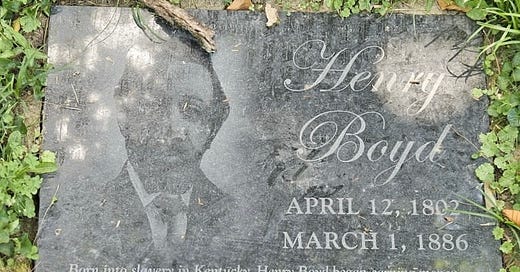


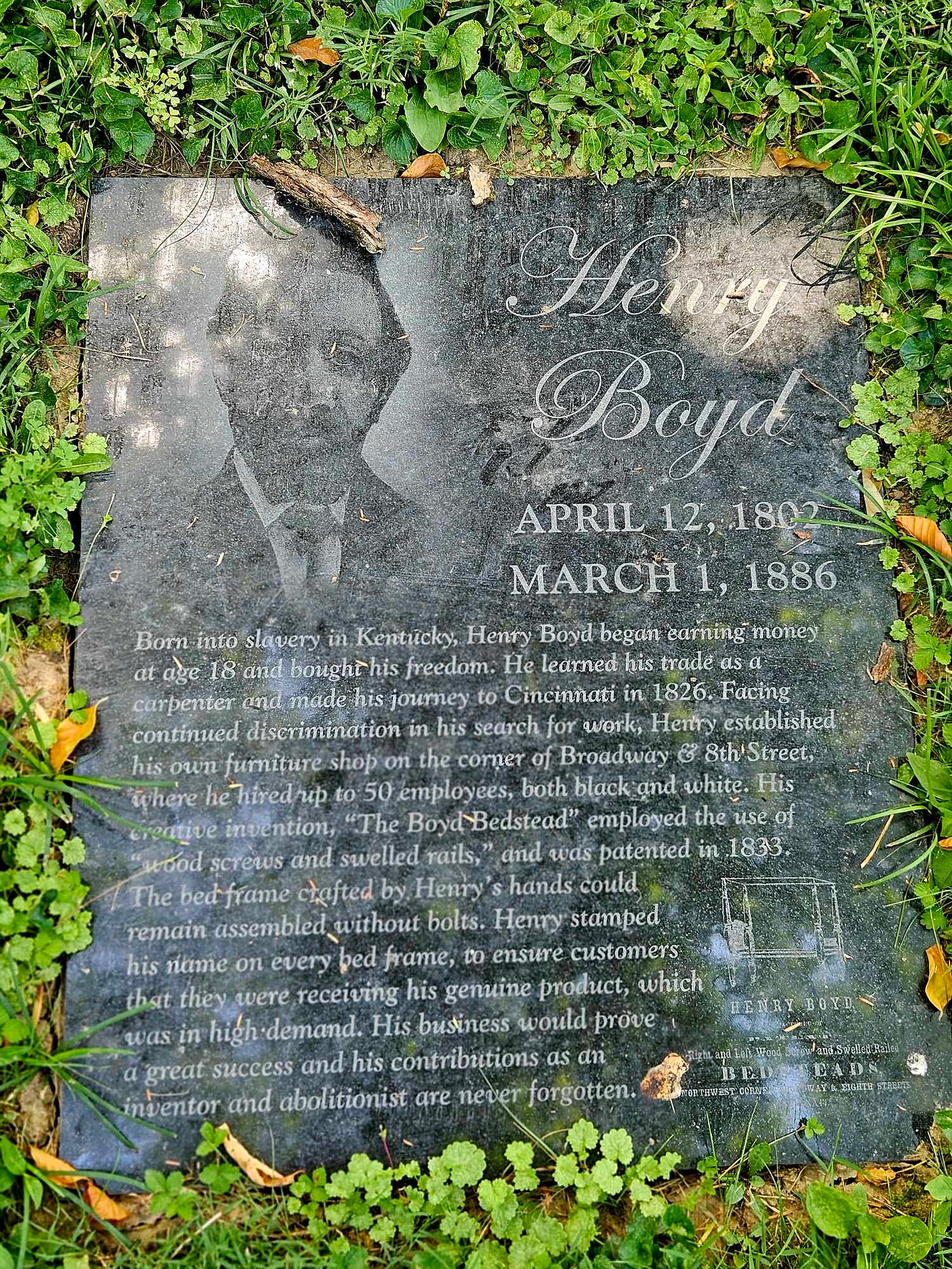
Can't wait to learn more about Henry Boyd next week.
Sarah- What an interesting story of discovering Boyd’s tomb. I’m always fascinated to be at the place where people had been. When they have made such an impact, it makes the discovery all the more significant!